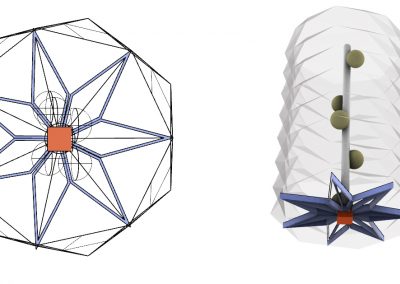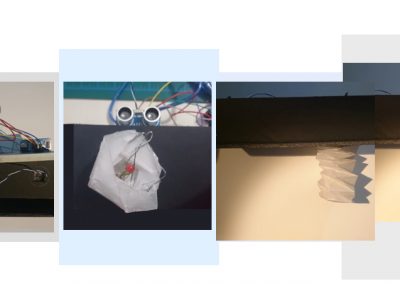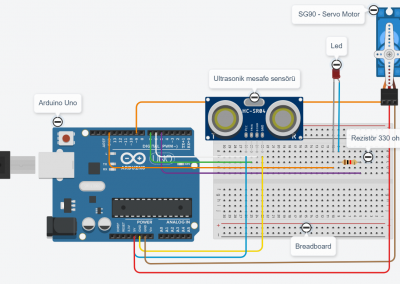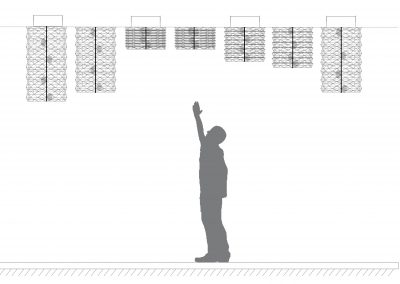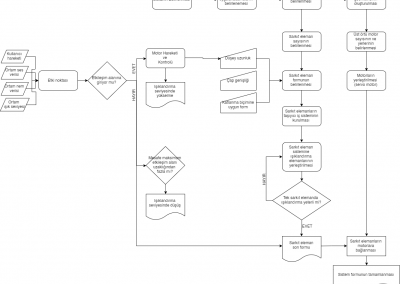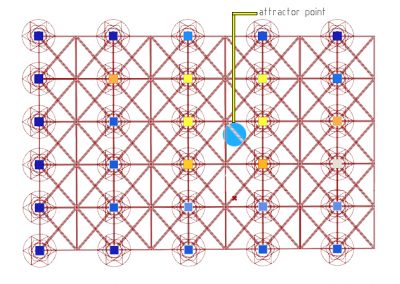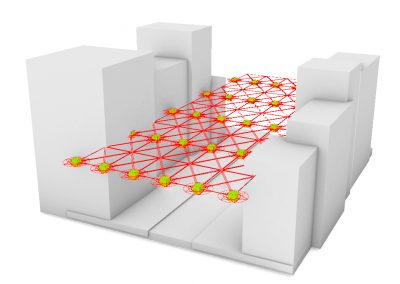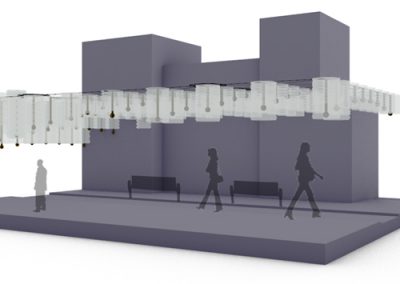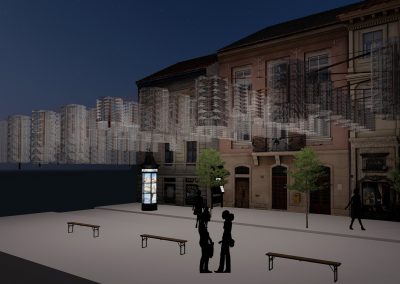Mimaride Kurgudan İnşaya: Adaptif Örtü Tasarımı
Teknoloji çağının etkisiyle değişen üretim ve kullanım biçimlerinin tasarım ürünlerini de doğrudan etkilemektedir. Geleneksel tasarım biçimlerinin aksine bilişim teknolojilerinin kullanıldığı tasarımlarda kullanıcı-ürün arasındaki etkileşimi daha yoğun gözlemleyebilmektedir. Üzerinde durulan kullanıcı-ürün ikilisi mimarlıkta kullanıcı-yapı olarak ele alınmakta ve adaptif mimarlık alanındaki çalışmalarla geliştirilmektedir. Bu çalışmada tasarım çıktılarının çevre ve kullanıcı ile etkileşime girdiği adaptif – duyarlı örtü tasarımı üzerine çalışılmıştır. Adaptif mimari üzerine yapılmış çalışmaların bir çoğunda adaptasyon geçirme biçimlerinin teoride kaldığı ve fiziksel olarak gerçekleşmesi için yeterli çözümlemelerin yapılmadığı tespit edilmiştir. Literaretürde eksik görülen bu alan için yapılan çalışmada adaptif bir örtü tasarımı ve bu tasarımın adaptasyon geçirme tekniği üzerinde durulmuştur. Bunun için farkı ortam ve ölçeklere uyum sağlayabilen, ortamın sabit ve hareketli elemanlarına bağlı olarak formsal değişkenlik gösteren bir sistem önerisinde bulunulmuştur. Sistemin ana elemanı olan ışıklandırma elemanları ise etki noktalarına bağlı olarak ışıklandırma seviyesi ve formsal değişim ile adaptasyon sürecine katkı sağlamaktadır. Duyarlı sistemlerin çevre ile girdiği etkileşime yanıt verebilir olmasının mimaride esneklik kavramını güçlendirdiği ve tek bir tasarımın bir çok amaç için kullanılabilir olmasının tüketimi kontrol altına almada önemli bir unsur olduğu sonucuna dikkat çekilmiştir.
From Fiction to Construct In Architecture: An Adaptive Canopy Design
The changing production and usage styles with the effect of the technology age also directly affect the design products. In contrast to traditional design forms, the interaction between user and product can be observed more intensely in designs where information technologies are used. The user-product dichotomy that is emphasized is considered as user-structure in architecture and developed with studies in adaptive architecture. In this study, adaptive-responsive canopy design, in which design outputs interact with the environment and the user, has been studied. In most of the studies on adaptive architecture, it has been determined that the adaptation styles remain theoretical and that sufficient analysis has not been done for physical realization. In this study, which is lacking in the literature, an adaptive canopy design and the adaptation technique of this design are emphasized. For this, a system that can adapt to different environments and scales, and that shows formal variation depending on the fixed and moving elements of the environment, has been proposed. Lighting elements, which are the main elements of the system, contribute to the adaptation process with changes in lighting levels depending on their impact points. It was concluded that the responsiveness of sensitive systems to the interaction with the environment strengthens the concept of flexibility in architecture and that a single design can be used for multiple purposes is an important element in controlling consumption.
© 2021 Istanbul Technical University Graduate School, Department of Informatics, Architectural Design Computing Program. All Rights Reserved
